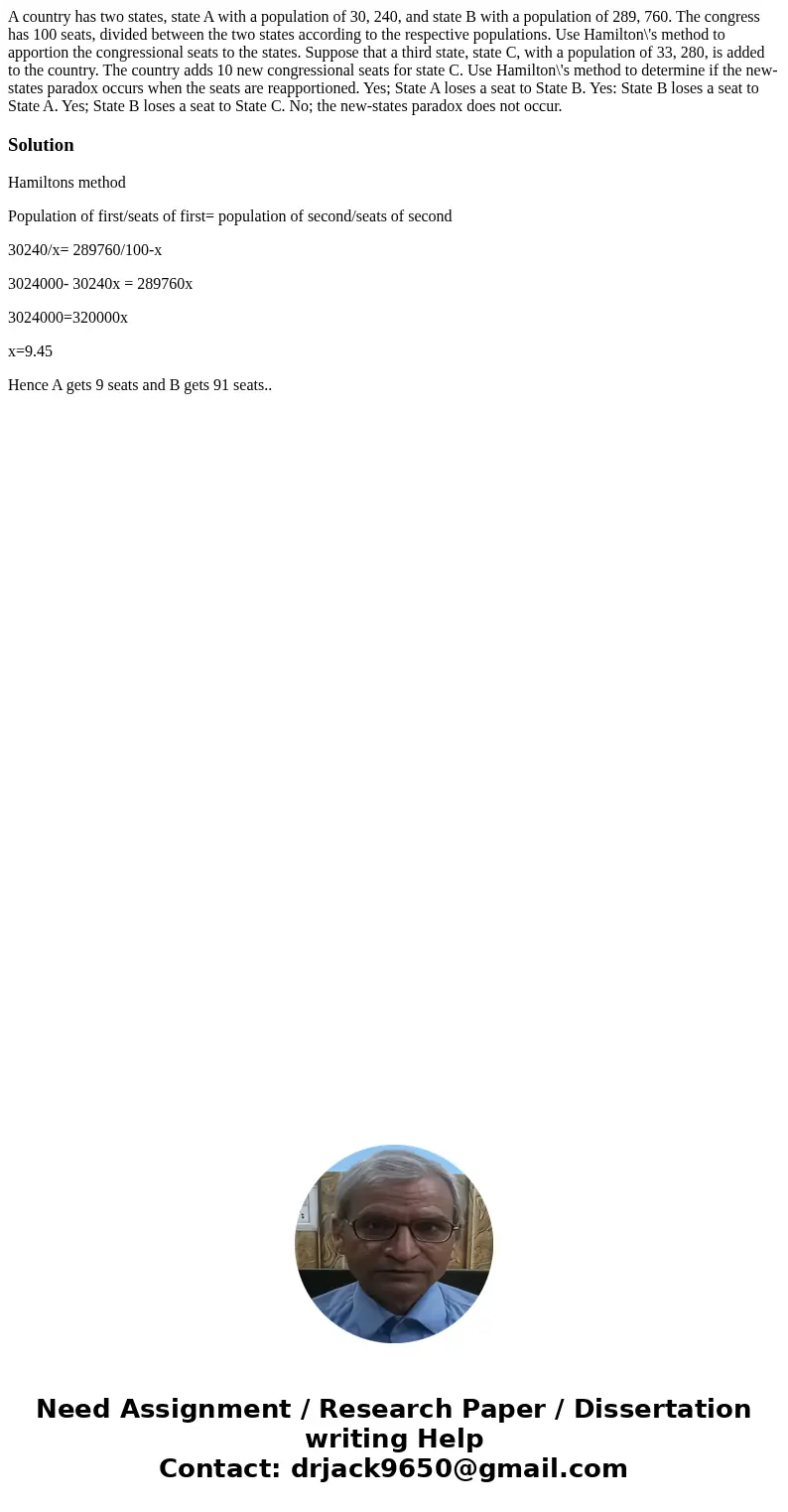A country has two states state A with a population of 30 240
A country has two states, state A with a population of 30, 240, and state B with a population of 289, 760. The congress has 100 seats, divided between the two states according to the respective populations. Use Hamilton\'s method to apportion the congressional seats to the states. Suppose that a third state, state C, with a population of 33, 280, is added to the country. The country adds 10 new congressional seats for state C. Use Hamilton\'s method to determine if the new-states paradox occurs when the seats are reapportioned. Yes; State A loses a seat to State B. Yes: State B loses a seat to State A. Yes; State B loses a seat to State C. No; the new-states paradox does not occur.
Solution
Hamiltons method
Population of first/seats of first= population of second/seats of second
30240/x= 289760/100-x
3024000- 30240x = 289760x
3024000=320000x
x=9.45
Hence A gets 9 seats and B gets 91 seats..

 Homework Sourse
Homework Sourse